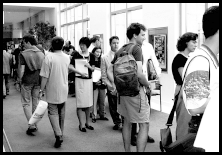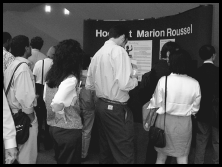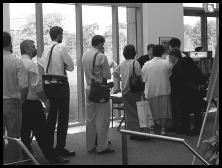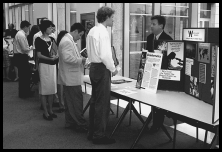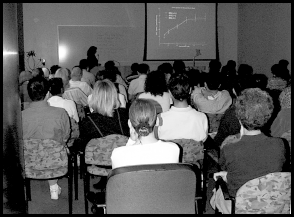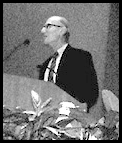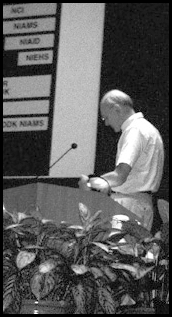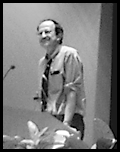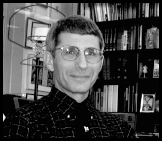atients on highly active triple-combination therapy whose plasma HIV levels had diminished below the vanishing point of commercial detection assays still had detectable virus in their peripheral blood cells, according to a Clinical Center study involving 18 HIV+ patients.
"Virus was not only detectable (in the resting CD4-positive T cells) but culturable and replication-competent," NIAID director Anthony Fauci told attendees at an NIH Research Festival symposium at which of-the-moment reports were not expected among the scheduled array of 60-year reminiscences. [He'd presented these findings a few weeks earlier at the Gallo lab meeting, a yearly AIDS research gathering hosted by Robert Gallo, formerly of NCI and now at his Institute of Human Virology in Baltimore, and they were to be aired again in October at an AIDS meeting outside Paris, Fauci later said.]
The 18 patients included five whose blood was sampled before treatment began and 13 who'd been on potent antiretroviral combination therapy for up to 10 months. Nine of these 13 had no detectable virus in plasma.
The frequency of integrated HIV DNA "was about the same in all three groups. . . . not very good news," Fauci observed. The cells also carried unintegrated HIV DNA, he said, noting that "if the virus were truly suppressed, we would have expected the unintegrated form to have disappeared." The presence of unintegrated HIV DNA within the cell "suggests doesn't prove, but strongly suggests - that that cell was recently infected. If all you saw was integrated virus, you really wouldn't know how long that virus had been there. It could have been for years," Fauci later said. He noted that at least two other groups - Doug Richman's at UCSD and Bob Siliciano's at Johns Hopkins - have been doing similar studies and getting similar results. A Siliciano co-investigator is David Ho, who led a team that early last year reported that triple therapy that included a protease inhibitor was yielding undetectable plasma virus levels.
The new findings, Fauci emphasized, "do not at all indict the drugs we have, which are quite good. Just because we haven't been able to completely eliminate the virus does not mean we should not continue to try. Suppressing plasma viremia has yielded striking results with very good clinical benefit." What's needed, he said, are even more potent drugs, against the same targets and against new ones like integrase, the enzyme that enables HIV DNA to integrate into the cell's genes - as well as "creative ways to rid the body of this reservoir of resting, latently infected cells." He suggested also that knowing the half-life of resting CD4 cells could lead to better projections of "how long before we can discontinue therapy with a reasonable degree of comfort."
-- Fran Pollner
